When Do I Need An Oil Change
Exercise Older Engines Need Oil With ZDDP Additives?
Using a loftier-zinc oil with a high dose of ZDDP additives helps protect classic car and hot rod engines. AMSOIL...
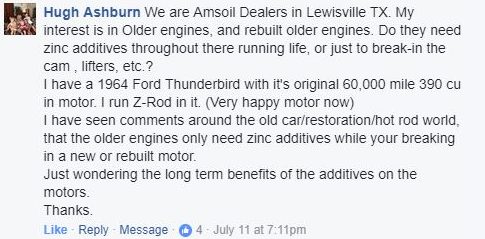
Thanks to Hugh Ashburn for request on our Facebook page almost using high-zinc oil in older engines. Specifically, should you lot employ a motor oil with ZDDP additives only during engine burglary or throughout the engine's lifespan?
In classic car and hot rod engines, use a loftier-zinc motor oil all the fourth dimension. Read on for details.
- What is loftier-zinc motor oil?
- How do ZDDP additives work?
- Flat-tappet cams vs. roller cams
- The role of piston rings
- Exercise you always need an oil with ZDDP additives?
What is loftier-zinc motor oil?
Zinc dialkyldithiophosphate (ZDDP) is the most common zinc-based condiment and is used primarily as an anti-wear amanuensis to forestall premature engine wear. It too provides corrosion and oxidation protection.
Notwithstanding, because the zinc and phosphorus constitute in ZDDP can negatively impact catalytic converters, it has been phased out of motor oil formulations in contempo years.
Reducing ZDDP has drawbacks, as classic-car owners have found. Older vehicles with apartment-tappet camshafts and, in detail, engines that include high-tension valve springs or other modifications that create loftier contact pressures, tin suffer premature wear due to reduced ZDDP levels.
For all-time protection, engine builders and gearheads typically use high-zinc and high-phosphorus motor oil to offer extra protection for flat-tappet cams, lifters and other components during suspension-in.
AMSOIL Break-In Oil, for instance, contains ii,200 ppm zinc and 2,000 ppm phosphorus.
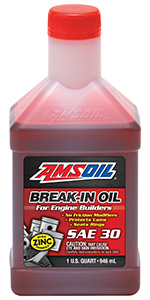
How exercise ZDDP additives piece of work?
ZDDP anti-wear additives are heat-activated, meaning they provide wear protection in areas of increased friction.
As temperatures ascension and surfaces come closer together, ZDDP decomposes and the resulting chemistry protects critical metal surfaces.
When parts motion during operation, any sliding or rolling motion takes identify on elevation of or inside the ZDDP anti-wear film, which reduces metallic-to-metallic contact.
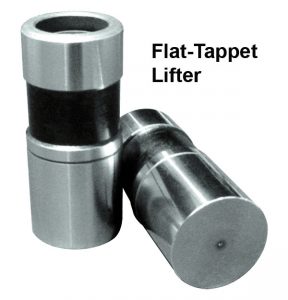
This is specially of import in engines with flat-tappet camshafts or engines modified to create more than horsepower. High-tension valve springs, often used in racing applications, also increase the potential for cam article of clothing and require boosted ZDDP.
Flat-tappet cams vs. roller cams
The design of flat-tappet cams makes them especially vulnerable to habiliment. As the name indicates, the tappet – or lifter – is flat. During operation, the cam-lobe slides rapidly over the tappet, increasing friction and temperatures.
A thin oil film is the only barrier that prevents the lifter and cam lobe from welding together.
If the oil motion picture fails or provides insufficient vesture protection, the two components can somewhen article of clothing the flat-tappet cam and affect valve operation.
Engine power and efficiency can decline if the flat-tappet cam cannot lift the valves plenty to fairly charge the chamber for ignition or release exhaust fumes. Because most Five-8 engines of the muscle-car era came standard with flat-tappet cams, the problem is especially prevalent to classic-car and hot rod owners.
Roller cams, on the other mitt, are differentiated by rolling contact rather than sliding contact. Although costlier, roller cams are common in virtually modern vehicles and can be retrofitted into archetype-car and hot-rod engines.
The office of piston rings
Even though Hugh didn't ask about it specifically, I should also mention the importance of seating the piston rings during suspension-in.
Although a new or freshly honed cylinder appears smooth to the naked heart, it actually contains microscopic peaks and valleys. If the valleys are also deep, they collect excess oil, which burns during combustion and leads to oil consumption.
The sharp peaks, meanwhile, provide insufficient area to allow the rings to seat tightly. That ways highly pressurized combustion gases can blow past the rings and into the crankcase, reducing horsepower and contaminating the oil.
Find out why championship engine builder Jesse Prather requires his customers to apply AMSOIL Break-in Oil.
Breaking in the engine wears the cylinder-wall asperities, providing increased surface area for the rings to seat tightly. The result is maximum compression (i.e. power) and minimum oil consumption.
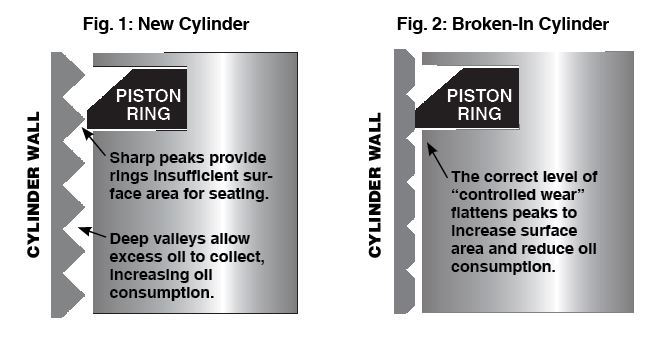
Do you always need an oil with ZDDP additives?
Practise you lot need to utilize high-zinc motor oil in an older engine after break-in, which is typically about 500 miles?
Yes, if you lot want to maintain horsepower and promote longevity.
Even later on the cam has seasoned, information technology'southward however exposed to tremendous rut and force per unit area, especially in a heavily modified or racing engine. The constant avalanche of pressure can rupture the oil motion-picture show responsible for preventing wear, leading to metal-to-metallic contact.
After break-in, we recommend using an oil with at least one,000 ppm ZDDP in a flat-tappet engine.
That way, you're providing your expensive engine with maximum protection confronting wear and horsepower loss.
AMSOIL Z-ROD Constructed Motor Oil, our chief recommendation for classic cars and hot rods, contains more than…
- 1,400 ppm zinc
- 1,300 ppm phosphorus
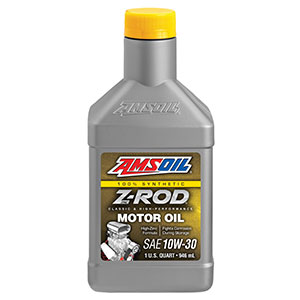
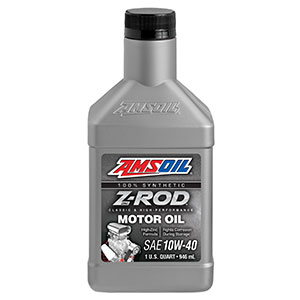
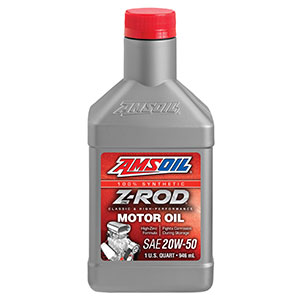
Z-ROD also contains stiff corrosion inhibitors that protect your engine from rust and corrosion during storage.
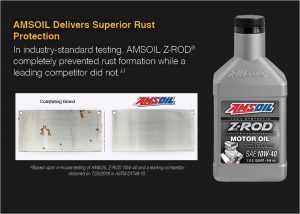
Updated. Originally published Aug. 25, 2017.
Source: https://blog.amsoil.com/do-older-vehicles-need-high-zinc-motor-oil/
Posted by: mintonglage1957.blogspot.com


0 Response to "When Do I Need An Oil Change"
Post a Comment